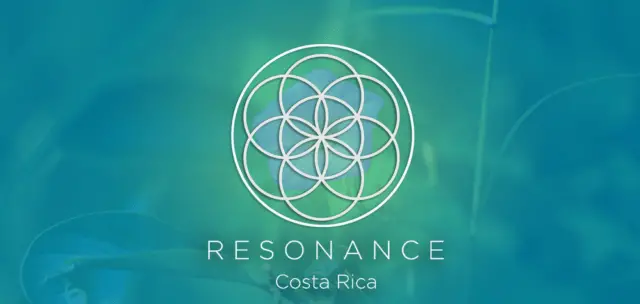Costa Rica, a jewel of Central America, is renowned for its biodiversity, pristine landscapes, and commitment to sustainability. But one surprising fact about this small yet remarkable nation is that its marine area is approximately ten times larger than its landmass. This extraordinary reality underscores Costa Rica’s ecological significance and highlights the country’s unique relationship with the ocean. With a land area of roughly 51,100 square kilometers and a marine territory spanning 564,000 square kilometers, Costa Rica’s dominion over the seas is as vital as its terrestrial achievements.
The Geographic Context
Costa Rica is bordered by the Pacific Ocean to the west and the Caribbean Sea to the east, giving it two distinctive marine environments that vastly expand its ecological reach. Its maritime boundaries encompass territorial waters and an Exclusive Economic Zone (EEZ), which gives the nation rights to manage and utilize resources in the surrounding waters. The EEZ contributes significantly to Costa Rica’s expansive marine area, reflecting international agreements that extend oceanic territories far beyond the coastline.
Additionally, Costa Rica’s position as part of the Central American isthmus places it at a crossroads of ocean currents, biodiversity migration routes, and nutrient flows. This geographical advantage fosters rich marine ecosystems that thrive in the warm waters of both the Pacific and the Caribbean.
A Biodiversity Hotspot Beneath the Waves
Costa Rica’s marine territory is home to a staggering variety of species, making it one of the most biodiverse marine regions in the world. Over 3,000 marine species have been documented within Costa Rican waters, including fish, crustaceans, mollusks, and marine mammals. Coral reefs, mangroves, seagrass beds, and pelagic zones form complex ecosystems that support life ranging from tiny plankton to massive whales.
One of the highlights of Costa Rica’s marine biodiversity is Cocos Island National Park, a UNESCO World Heritage Site located about 550 kilometers off the Pacific coast. Known as a diver’s paradise, Cocos Island is a critical habitat for pelagic species, such as hammerhead sharks, manta rays, and dolphins. The island’s remote location and protection status make it a sanctuary for both iconic species and scientific research.
Marine Ecosystem Services
Costa Rica’s vast marine territory provides invaluable ecosystem services that benefit the planet as a whole. Coral reefs act as natural buffers, protecting coastlines from erosion and storm surges, while mangroves play a vital role in carbon sequestration and nutrient cycling. Seagrass beds serve as nurseries for fish and other marine organisms, supporting both ecological balance and local fisheries.
Additionally, Costa Rica’s waters contribute to global biodiversity by serving as breeding, feeding, and migratory hotspots for endangered species like sea turtles, humpback whales, and seabirds. The interconnectedness of these ecosystems highlights the importance of Costa Rica’s stewardship over its marine resources.
Economic Importance of the Marine Area
Costa Rica’s marine territory is also crucial to its economy, particularly through fisheries and ecotourism. Sustainable fishing practices provide livelihoods for coastal communities, while marine tourism attracts visitors from around the globe. Activities like whale watching, snorkeling, and scuba diving generate significant revenue and help raise awareness about marine conservation.
Cocos Island, for example, is a magnet for divers who seek encounters with sharks, rays, and other ocean giants. The economic benefits of such tourism underscore the importance of maintaining healthy marine ecosystems, as they are directly tied to Costa Rica’s economy.
Conservation Challenges
Despite its ecological and economic significance, Costa Rica’s marine area faces challenges. Overfishing, pollution, climate change, and illegal fishing threaten the health of marine ecosystems. Rising sea temperatures and ocean acidification, driven by global climate change, pose additional risks to coral reefs and fish populations.
Plastic pollution is a particularly pressing issue, as discarded materials accumulate in the ocean and harm marine species. Costa Rica has taken steps to combat this problem by banning single-use plastics and encouraging sustainable practices, but the global nature of marine pollution requires broader international cooperation.
Costa Rica’s Commitment to Marine Conservation
Costa Rica has established itself as a global leader in environmental protection, and its marine conservation efforts are no exception. Nearly 30% of the country’s marine area is designated as protected, including national parks, wildlife refuges, and marine reserves. These areas limit human activities, allowing ecosystems to recover and flourish.
Cocos Island National Park is a prime example of Costa Rica’s dedication to marine preservation. As one of the most biodiverse marine parks in the world, Cocos Island is fully protected from fishing and development, ensuring the survival of species that depend on its unique habitat. Costa Rica’s marine protected areas serve as models for sustainable ocean management and inspire similar efforts worldwide.
Community involvement is another key aspect of Costa Rica’s conservation strategy. Programs that engage local populations in protecting marine environments foster a sense of stewardship and align conservation goals with the needs of coastal communities. These initiatives ensure that protection efforts are both effective and inclusive.
A Vision for the Future
Costa Rica’s expansive marine territory is more than just an ecological treasure—it is a symbol of the nation’s commitment to sustainability and global responsibility. As the world faces increasing threats to ocean health, Costa Rica’s proactive approach serves as an example for other nations. By balancing economic development with environmental protection, Costa Rica demonstrates that the ocean’s vast potential can be harnessed responsibly.
Moving forward, continued investment in marine research, international collaborations, and climate change mitigation will be essential to preserving Costa Rica’s underwater wonders. By prioritizing the health of its oceans, Costa Rica ensures that its marine area remains a source of life, inspiration, and resilience for generations to come.
Costa Rica’s marine area, ten times larger than its landmass, is a testament to the country’s ecological richness and global significance. From coral reefs and mangroves to the pelagic wonders of Cocos Island, these waters host unparalleled biodiversity and provide invaluable ecosystem services. Costa Rica’s commitment to marine conservation reflects its values and vision for a sustainable future, making its oceanic territory a source of pride and hope for all.

